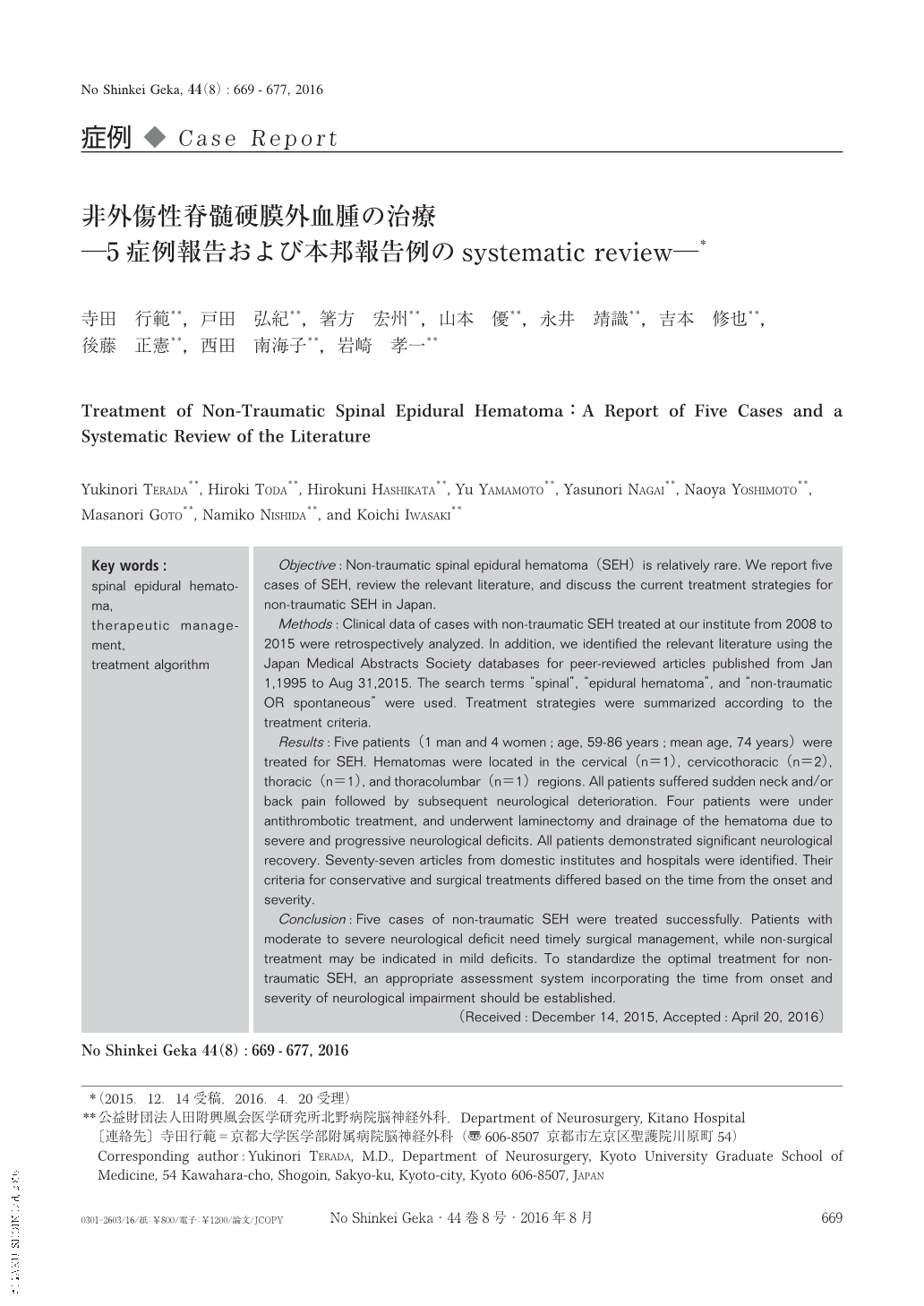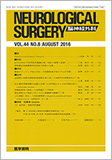Japanese
English
- 有料閲覧
- Abstract 文献概要
- 1ページ目 Look Inside
- 参考文献 Reference
Ⅰ.はじめに
非外傷性脊髄硬膜外血腫は比較的稀な疾患である.ただし特徴的な病歴と神経学的所見より適切な脊椎画像診断を行えば,早期診断と治療が可能である.血腫部位に応じた突然の頚部痛や背部痛で発症し,進行性の運動麻痺・感覚障害・膀胱直腸障害が後続することが多い5,9,13).しかし,無痛例や片麻痺例では脳卒中と誤り治療を受ける例があり注意を要する8).また治療について,従来は早期手術が推奨されたが,近年は保存的治療の良好な結果も報告されており,標準的な治療プロトコールは定まっていない6,8,10,12,16,18,19,22-25).本報告では自験の非外傷性脊髄硬膜外血腫5例を報告するが,5例中4例が65歳以上の高齢者であり,また同じく4例が抗血栓薬内服中の患者であった.この2点は本邦の人口分布の特徴である高齢化を反映していると思われる.今回われわれは,治療環境の類似している本邦の治療報告を集積する目的で,本邦より発表された文献についてsystematic reviewを行い,非外傷性脊髄硬膜外血腫の治療選択肢を検討した.
Objective:Non-traumatic spinal epidural hematoma(SEH)is relatively rare. We report five cases of SEH, review the relevant literature, and discuss the current treatment strategies for non-traumatic SEH in Japan.
Methods:Clinical data of cases with non-traumatic SEH treated at our institute from 2008 to 2015 were retrospectively analyzed. In addition, we identified the relevant literature using the Japan Medical Abstracts Society databases for peer-reviewed articles published from Jan 1,1995 to Aug 31,2015. The search terms “spinal”, “epidural hematoma”, and “non-traumatic OR spontaneous” were used. Treatment strategies were summarized according to the treatment criteria.
Results:Five patients(1 man and 4 women;age, 59-86 years;mean age, 74 years)were treated for SEH. Hematomas were located in the cervical(n=1), cervicothoracic(n=2), thoracic(n=1), and thoracolumbar(n=1)regions. All patients suffered sudden neck and/or back pain followed by subsequent neurological deterioration. Four patients were under antithrombotic treatment, and underwent laminectomy and drainage of the hematoma due to severe and progressive neurological deficits. All patients demonstrated significant neurological recovery. Seventy-seven articles from domestic institutes and hospitals were identified. Their criteria for conservative and surgical treatments differed based on the time from the onset and severity.
Conclusion:Five cases of non-traumatic SEH were treated successfully. Patients with moderate to severe neurological deficit need timely surgical management, while non-surgical treatment may be indicated in mild deficits. To standardize the optimal treatment for non-traumatic SEH, an appropriate assessment system incorporating the time from onset and severity of neurological impairment should be established.

Copyright © 2016, Igaku-Shoin Ltd. All rights reserved.


